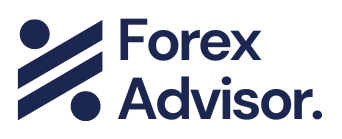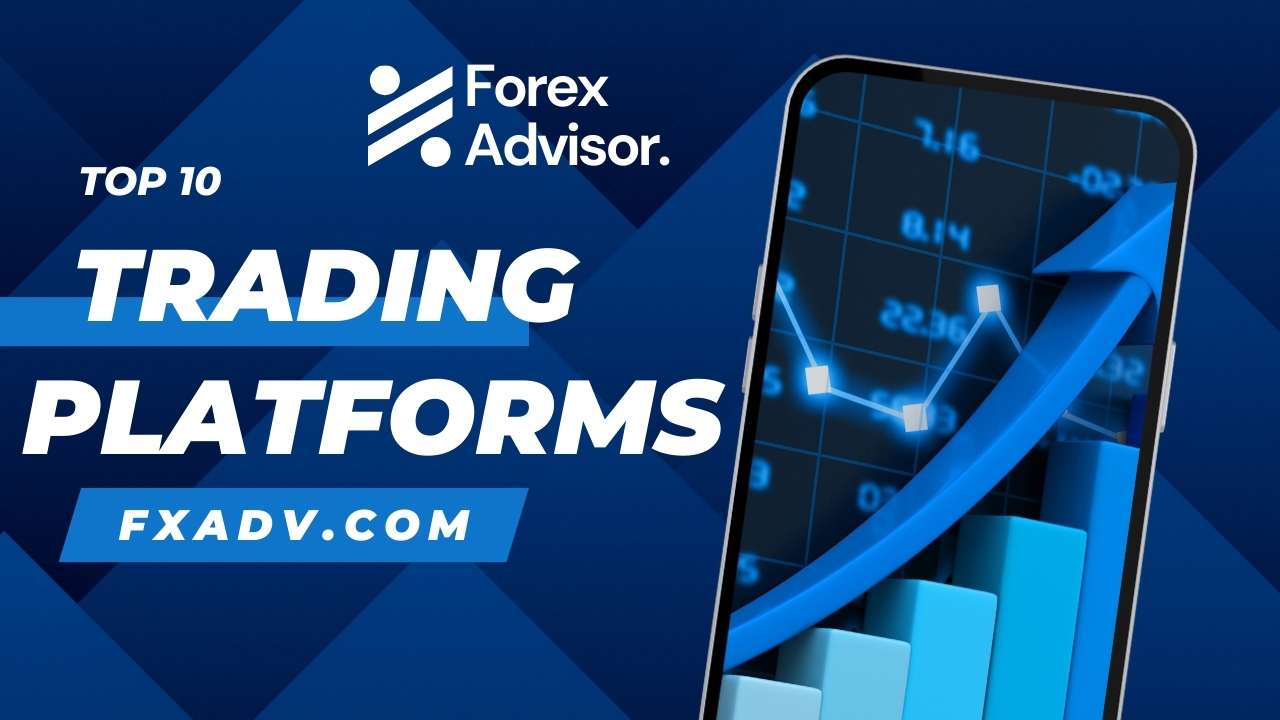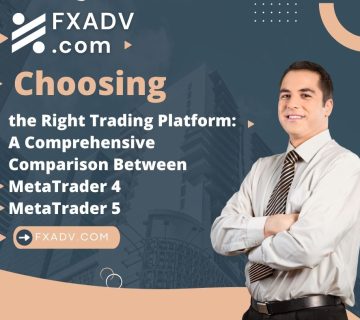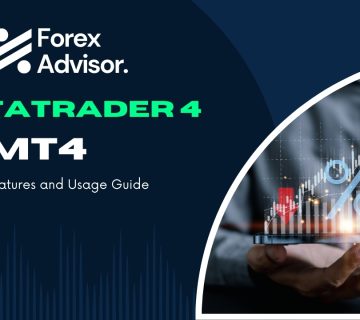فهرس المحتوي
ToggleTop 10 Regulated Trading Platforms: Features, Advantages, and Drawbacks – A Detailed Comparison
In the world of financial markets, choosing the right trading platform can significantly impact your success as a trader or investor. While there are countless options, regulated platforms ensure a safer environment for users by adhering to financial standards and offering transparency. In this article, we’ll explore the best-regulated trading platforms, their advantages, disadvantages, and provide a detailed comparison to help you make an informed choice.
How to Identify Approved Forex Brokers and Avoid Scams
1. MetaTrader 4 (MT4)
One of the most well-known platforms for Forex and CFD trading, MetaTrader 4 (MT4) has been widely used since 2005.
Advantages:
- User-friendly interface: MT4 is popular for its simple and intuitive design, making it easy for both beginners and experienced traders.
- Automated trading: Users can implement Expert Advisors (EAs), which are automated trading systems.
- Customizability: MT4 offers a wide range of indicators, allowing traders to personalize their charts.
- Global adoption: MT4 is supported by numerous brokers worldwide, making it a trusted choice.
Disadvantages:
- Outdated technology: While still functional, MT4 is outdated compared to newer platforms.
- Limited asset classes: Primarily focused on Forex and CFDs, MT4 does not support direct stock, bond, or commodity trading.
2. MetaTrader 5 (MT5)
The successor to MT4, MetaTrader 5 expands its functionality with additional asset classes and more advanced trading tools.
Advantages:
- Broader asset classes: MT5 allows trading in stocks, futures, and bonds, in addition to Forex and CFDs.
- Advanced charting tools: Includes more timeframes and indicators than MT4.
- Economic calendar: Integrated within the platform for real-time news and updates.
Disadvantages:
- Learning curve: MT5’s additional features make it more complicated to learn, especially for beginners.
- Lesser broker support: Although growing, MT5 is not as universally supported by brokers as MT4.
3. cTrader
cTrader is another popular platform known for its high-speed execution and advanced trading features.
Advantages:
- Faster execution: cTrader is known for its No Dealing Desk (NDD) environment, ensuring fast and transparent trade execution.
- Advanced trading tools: Offers features such as Level II pricing, better market depth, and one-click trading.
- User-friendly interface: Sleek and modern design appeals to traders seeking a balance between simplicity and advanced functionality.
Disadvantages:
- Limited broker support: Fewer brokers support cTrader compared to MT4 and MT5.
- Less customization: It offers fewer options for indicators and chart customizations compared to MT4.
4. TradingView
Known primarily for its charting capabilities, TradingView has become one of the most popular platforms for technical analysis and social trading.
Advantages:
- Powerful charting tools: TradingView offers some of the best charting software available, with numerous indicators and drawing tools.
- Community sharing: Users can publish and share trading ideas with a vast community of traders.
- Web-based platform: Accessible from any device with a browser, making it highly convenient.
Disadvantages:
- Limited direct trading: TradingView does not offer direct trading functionality on its own; it requires linking with a broker.
- Cost: Advanced features are locked behind a subscription model, which may be expensive for some traders.
5. NinjaTrader
NinjaTrader is a popular platform for futures and forex trading, particularly among day traders.
Advantages:
- Advanced analytics: Provides powerful charting and analysis tools, including advanced trade management systems.
- Custom indicators: NinjaTrader allows users to create custom indicators and trading strategies.
- Low commission rates: Its futures trading commissions are competitive, which is appealing to active traders.
Disadvantages:
- Steep learning curve: The platform’s complexity can be overwhelming for beginners.
- Cost: While basic features are free, advanced tools and real-time data require paid subscriptions.
6. Interactive Brokers (IBKR)
Interactive Brokers is a leading global brokerage platform, known for its wide range of asset classes and competitive pricing.
Advantages:
- Comprehensive asset coverage: Allows trading in stocks, options, futures, Forex, bonds, and mutual funds.
- Low commissions: Known for offering some of the lowest commissions in the industry.
- Advanced research tools: IBKR provides a wide array of research reports, real-time news, and analytics.
Disadvantages:
- Complexity: The platform is not beginner-friendly due to its range of features and intricate layout.
- High minimum balance: New traders may find the minimum balance requirement too steep.
7. Thinkorswim by TD Ameritrade
Thinkorswim is a professional-grade trading platform available through TD Ameritrade and favored by options traders.
Advantages:
- Extensive trading tools: Advanced charting, technical analysis tools, and backtesting capabilities.
- Paper trading: Offers a simulated trading feature that allows users to practice strategies without risking real money.
- Educational resources: Access to extensive educational materials, webinars, and tutorials.
Disadvantages:
- Steep learning curve: Beginners might find the platform overwhelming due to its depth of tools.
- Restricted to U.S. clients: Thinkorswim is only available to TD Ameritrade users in the United States.
8. eToro
eToro is widely known as a social trading platform, allowing traders to follow and copy the trades of successful investors.
Advantages:
- Copy trading: Traders can follow and replicate the trades of top-performing investors automatically.
- User-friendly: Simple interface, especially designed for beginners.
- Wide asset selection: Supports a range of assets including stocks, cryptocurrencies, and ETFs.
Disadvantages:
- High spreads: eToro’s spreads can be higher compared to other trading platforms.
- Limited tools for advanced traders: The platform is more focused on social trading and may lack some advanced tools.
9. SaxoTraderGO
Offered by Saxo Bank, SaxoTraderGO is a comprehensive platform for Forex, CFDs, stocks, bonds, and more.
Advantages:
- Wide range of markets: Access to more than 40,000 instruments, including stocks, bonds, commodities, and options.
- Customizable workspace: Offers a highly customizable trading environment.
- Excellent research tools: Provides advanced tools for news, analysis, and research.
Disadvantages:
- High minimum deposit: SaxoTraderGO has a high minimum deposit requirement, which may be a barrier for smaller traders.
- Complexity: The platform’s range of features can be overwhelming for new traders.
10. Plus500
Plus500 is a CFD trading platform known for its simplicity and accessibility.
Advantages:
- User-friendly interface: The platform is straightforward and designed for traders of all experience levels.
- No commissions: Plus500 does not charge commissions, earning money from spreads.
- Risk management tools: Offers tools like guaranteed stop-loss orders to help manage risk.
Disadvantages:
- Limited charting tools: Compared to other platforms, Plus500 offers fewer tools for technical analysis.
- Restricted assets: Primarily focuses on CFDs, meaning you cannot trade actual stocks or currencies directly.
Comparison Table: Trading Platforms
Top 10 Regulated Trading Platforms
| Platform | Best For | Asset Classes | Advantages | Disadvantages |
|---|---|---|---|---|
| MT4 | Forex and CFD traders | Forex, CFDs | User-friendly, customizable, automated trading | Outdated, limited to Forex and CFDs |
| MT5 | Advanced Forex, Stocks | Forex, Stocks, Bonds | Broader asset coverage, advanced charting tools | Steeper learning curve, fewer brokers |
| cTrader | Speed-focused traders | Forex, CFDs | Fast execution, advanced tools | Limited broker support, less customizable |
| TradingView | Technical analysts | Forex, Stocks, ETFs | Best charting tools, community trading ideas | Requires a broker for direct trading, costs for advanced features |
| NinjaTrader | Futures and Forex day traders | Forex, Futures | Powerful analytics, customizable indicators | Steep learning curve, costs for advanced tools |
| Interactive Brokers | All-around traders | Forex, Stocks, Bonds | Low commissions, wide asset coverage | Not beginner-friendly, high minimum balance |
| Thinkorswim | Options traders | Options, Stocks | Advanced tools, educational resources, paper trading | Overwhelming for beginners, U.S.-only |
| eToro | Social traders | Forex, Stocks, ETFs | Copy trading, simple interface, wide asset selection | High spreads, limited advanced tools |
| SaxoTraderGO | International traders | Forex, Stocks, Bonds | Wide range of instruments, excellent research tools | High minimum deposit, complexity |
| Plus500 | CFD traders | CFDs | No commissions, risk management tools | Limited charting tools, CFDs only |
Conclusion
Choosing the best trading platform depends largely on your trading style, experience level, and the asset classes you wish to trade. While platforms like MT4 and MT5 dominate the Forex and CFD space, platforms like Interactive Brokers and SaxoTraderGO offer broader market access. Consider your priorities, whether they lie in speed, social trading, or advanced analytics, and pick the platform that fits your needs.
By weighing the pros and cons, you’ll be better equipped to select the best-regulated trading platform that aligns with your financial goals.
FAQs
1. What is the difference between MetaTrader 4 (MT4) and MetaTrader 5 (MT5)?
MetaTrader 4 (MT4) is a more straightforward platform primarily focused on Forex and CFDs, whereas MetaTrader 5 (MT5) offers a broader range of asset classes, including stocks, futures, and bonds. MT5 also has more advanced charting tools and economic calendars, but it has a steeper learning curve compared to MT4.
2. Is cTrader better than MT4?
cTrader is known for its faster execution speeds and transparency due to its No Dealing Desk (NDD) environment. If you prioritize speed and direct market access, cTrader could be a better option than MT4. However, MT4 offers more customization options, including a wider range of indicators and automated trading tools, which makes it appealing to many traders.
3. Which platform is best for social trading?
eToro is the best-regulated platform for social trading. Its unique copy trading feature allows users to automatically replicate the trades of successful investors, making it ideal for beginners who want to learn from experienced traders.
4. Is NinjaTrader suitable for beginners?
NinjaTrader is more suited to advanced traders due to its powerful analytics, custom indicators, and complex layout. Beginners might find the platform overwhelming, especially since its advanced features require a deep understanding of the markets.
5. Why are regulated trading platforms important?
Regulated trading platforms follow strict financial standards that ensure security, transparency, and accountability. They protect traders by adhering to government and industry regulations, offering a safer trading environment compared to unregulated platforms.








